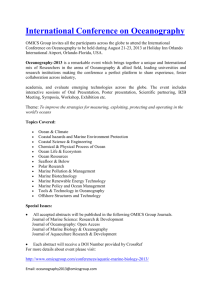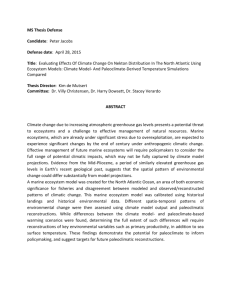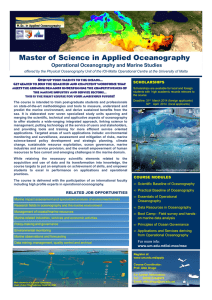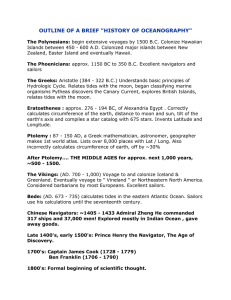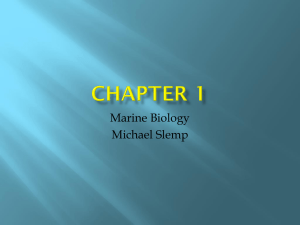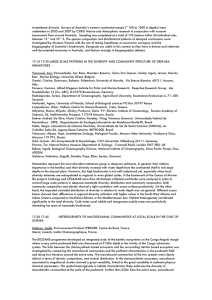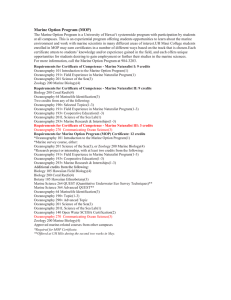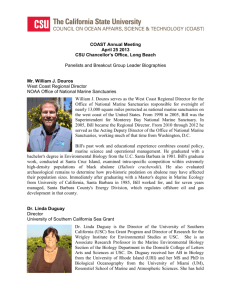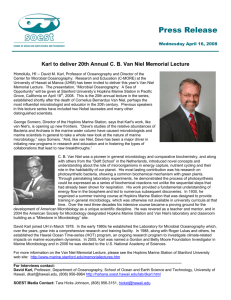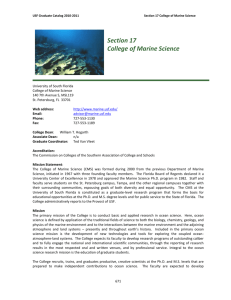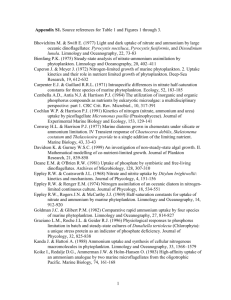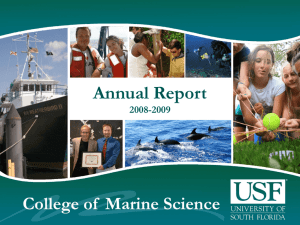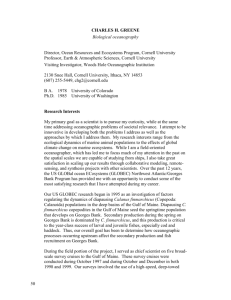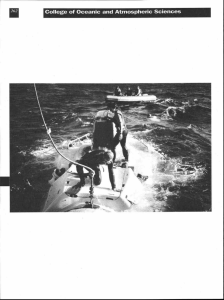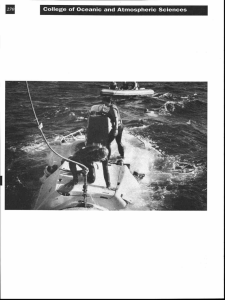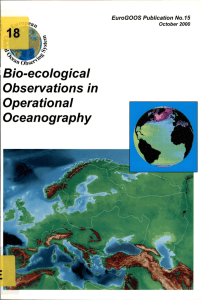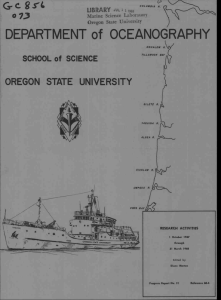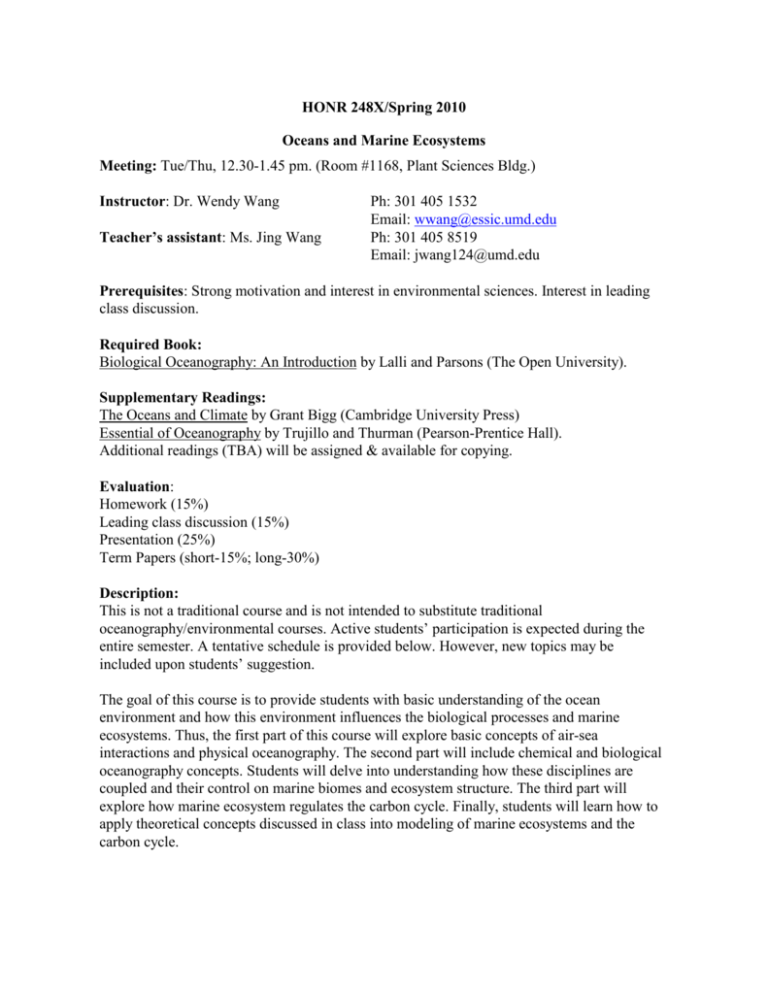
HONR 248X/Spring 2010
Oceans and Marine Ecosystems
Meeting: Tue/Thu, 12.30-1.45 pm. (Room #1168, Plant Sciences Bldg.)
Instructor: Dr. Wendy Wang
Teacher’s assistant: Ms. Jing Wang
Ph: 301 405 1532
Email: wwang@essic.umd.edu
Ph: 301 405 8519
Email: jwang124@umd.edu
Prerequisites: Strong motivation and interest in environmental sciences. Interest in leading
class discussion.
Required Book:
Biological Oceanography: An Introduction by Lalli and Parsons (The Open University).
Supplementary Readings:
The Oceans and Climate by Grant Bigg (Cambridge University Press)
Essential of Oceanography by Trujillo and Thurman (Pearson-Prentice Hall).
Additional readings (TBA) will be assigned & available for copying.
Evaluation:
Homework (15%)
Leading class discussion (15%)
Presentation (25%)
Term Papers (short-15%; long-30%)
Description:
This is not a traditional course and is not intended to substitute traditional
oceanography/environmental courses. Active students’ participation is expected during the
entire semester. A tentative schedule is provided below. However, new topics may be
included upon students’ suggestion.
The goal of this course is to provide students with basic understanding of the ocean
environment and how this environment influences the biological processes and marine
ecosystems. Thus, the first part of this course will explore basic concepts of air-sea
interactions and physical oceanography. The second part will include chemical and biological
oceanography concepts. Students will delve into understanding how these disciplines are
coupled and their control on marine biomes and ecosystem structure. The third part will
explore how marine ecosystem regulates the carbon cycle. Finally, students will learn how to
apply theoretical concepts discussed in class into modeling of marine ecosystems and the
carbon cycle.
On a weekly base, the instructor leads the first lecture; the students are responsible for the
second lecture. If new material is to be covered during the second lecture, the instructor will
guide the leading student in preparing this lecture. A discussion led by the students follows the
second lecture. The discussion can be on the new material presented by the leading student; or
on the material covered by the instructor during the previous lecture. Students are expected to
lead the class discussion.
The sequence of the leading students will be discussed in class at the beginning of the
semester, depending on the number of students registered to the course and their interest. Each
student is expected to lead the class discussion at least once during the semester. There will
not be a midterm or a final exam. Instead, students will be graded based on active class
participation: (a) homework; (b) leading class discussion; (c) giving presentation; (d) writing
term papers (one short and one long paper) on topics of their choice among those discussed in
class.
Date
Topic
Reading
1/26
Introduction to the course.
Given by TA
1/28-2/2
The climate & ocean-atm. interaction
Ch.1&2 (OC)
2/4-2/9
Ocean circulation and currents
Ch.2 (OC)+
2/11-2/16
Aquatic environments
Ch.2 (BC)
2/18
Large scale air-sea interaction (ENSO)
Ch.5 (OC)
2/23-2/25
Research/short paper
3/2-
Nutrient cycling & biogeochemistry
Given by TA
3/4-3/9
Phytoplankton and primary production
Ch.3 (BC)
3/11
Zooplankton and secondary production
Ch.4 (BC)
3/16-3/18
Break
3/23-3/30
Student presentations
4/1-4/6
Ocean color & remote sensing
TBA-Maria
4/8-4/13
Fishery and marine food web
Ch.5&6 (BC)
4/15-4/20
The carbon cycle
TBA
4/22-4/29
Modeling marine ecosystem
TBA
5/4-5/6
Long term paper
5/11
Final discussions




